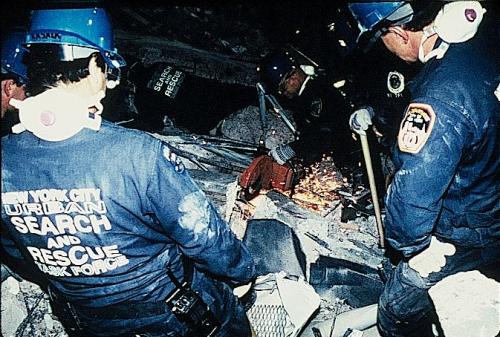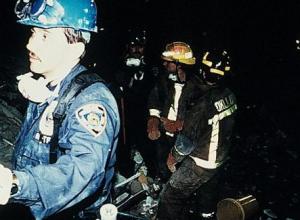
The Oklahoma City bombing was a terrorist bomb attack on the Alfred P. Murrah Federal Building in downtown Oklahoma City on April 19, 1995. It would remain the most destructive act of terrorism on American soil until the September 11, 2001 attacks. The Oklahoma blast claimed 168 lives, including 19 children under the age of 6, and injured more than 680 people.The blast destroyed or damaged 324 buildings within a sixteen-block radius, destroyed or burned 86 cars, and shattered glass in 258 nearby buildings. The bomb was estimated to have caused at least $652 million worth of damage. Extensive rescue efforts were undertaken by local, state, federal, and worldwide agencies in the wake of the bombing, and substantial donations were received from across the country.

In the days following the blast, over 12,000 people participated in relief and rescue operations. The Federal Emergency Management Agency (FEMA) activated eleven of its Urban Search and Rescue Task Forces, which consisted of a team of 665 rescue workers. One nurse was killed in the rescue attempt after she was hit on the head by debris, and 26 other rescuers were hospitalized because of various injuries. Twenty-four K-9 units and out-of-state dogs were brought in to search for survivors and bodies in the building debris. In an effort to recover additional bodies, 100 to 350 short tons (91 to 320 t) of rubble were removed from the site each day from April 24 to April 29, 1995.
Rescue and recovery efforts were concluded at 12:05 am CST on May 5, by which time the bodies of all but three of the victims had been recovered. For safety reasons, the building was initially slated to be demolished shortly afterward. McVeigh's attorney, Stephen Jones, filed a motion to delay the demolition until the defense team could examine the site in preparation for the trial. More than a month after the bombing, at 7:02 am CST on May 23, the Murrah Federal building was demolished. The final three bodies, those of two credit union employees and a customer, were recovered. For several days after the building's demolition, trucks hauled 800 short tons (730 t) of debris a day away from the site. Some of the debris was used as evidence in the conspirators' trials, incorporated into memorials, donated to local schools, or sold to raise funds for relief efforts.
New York Task Force 1 Deployments










